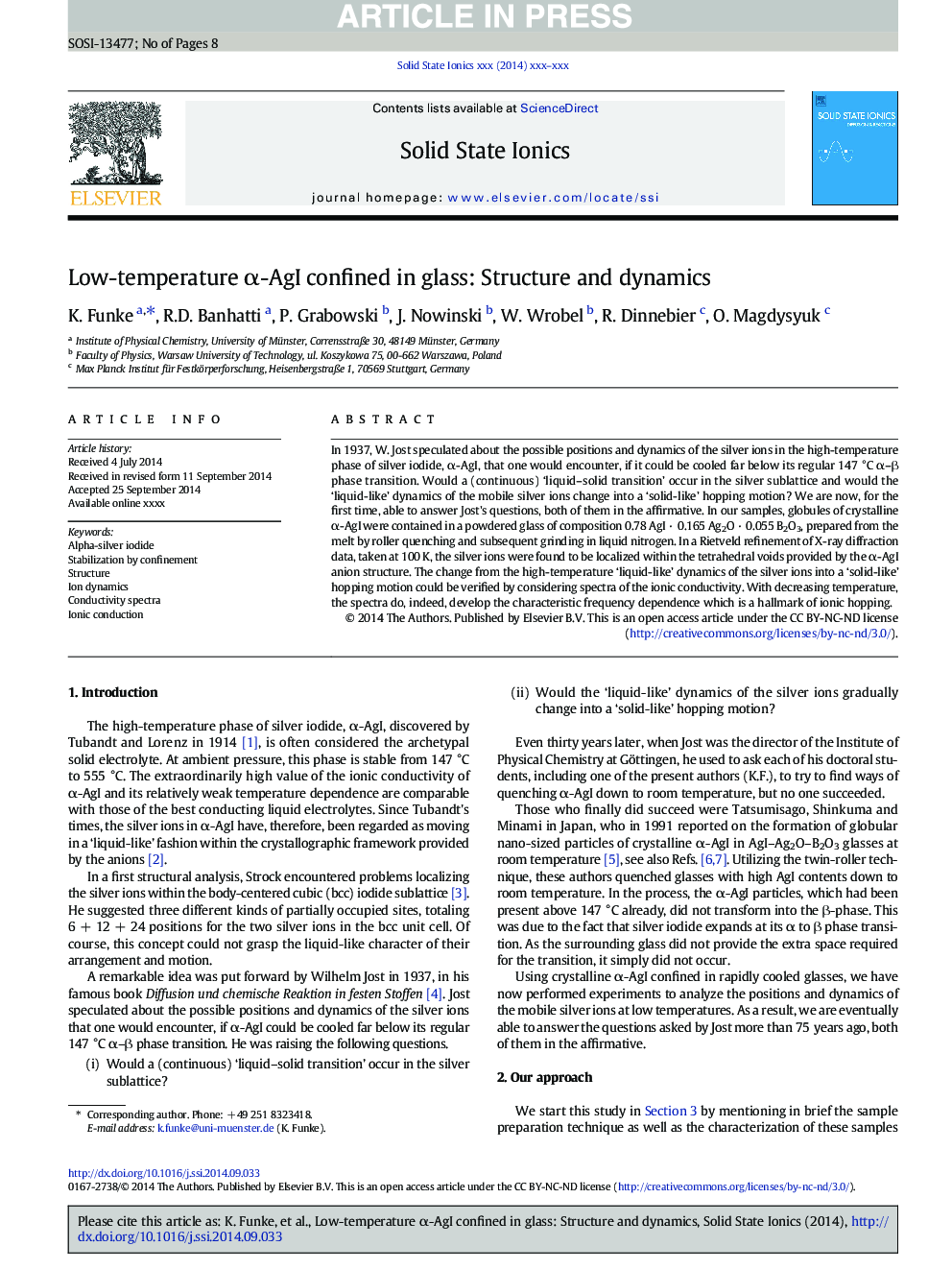| Article ID | Journal | Published Year | Pages | File Type |
|---|---|---|---|---|
| 7745784 | Solid State Ionics | 2015 | 8 Pages |
Abstract
In 1937, W. Jost speculated about the possible positions and dynamics of the silver ions in the high-temperature phase of silver iodide, α-AgI, that one would encounter, if it could be cooled far below its regular 147 °C α-β phase transition. Would a (continuous) 'liquid-solid transition' occur in the silver sublattice and would the 'liquid-like' dynamics of the mobile silver ions change into a 'solid-like' hopping motion? We are now, for the first time, able to answer Jost's questions, both of them in the affirmative. In our samples, globules of crystalline α-AgI were contained in a powdered glass of composition 0.78 AgI · 0.165 Ag2O · 0.055 B2O3, prepared from the melt by roller quenching and subsequent grinding in liquid nitrogen. In a Rietveld refinement of X-ray diffraction data, taken at 100 K, the silver ions were found to be localized within the tetrahedral voids provided by the α-AgI anion structure. The change from the high-temperature 'liquid-like' dynamics of the silver ions into a 'solid-like' hopping motion could be verified by considering spectra of the ionic conductivity. With decreasing temperature, the spectra do, indeed, develop the characteristic frequency dependence which is a hallmark of ionic hopping.
Related Topics
Physical Sciences and Engineering
Chemistry
Electrochemistry
Authors
K. Funke, R.D. Banhatti, P. Grabowski, J. Nowinski, W. Wrobel, R. Dinnebier, O. Magdysyuk,
